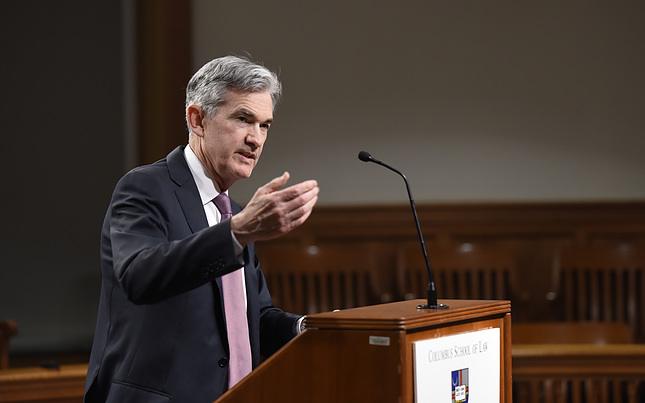- EUR/USD rebounded sharply on Friday to just below 1.1300 and is set for its best day since May.
- Dovish repricing in global central bank expectations has hit the hawkishly priced USD harder than the comparatively dovishly priced euro.
EUR/USD has rebounded sharply on the final trading day of the week amid a spike in broader market volatility owing to concerns about a new, potentially vaccine-resistant, Covid-19 variant in South Africa. The pair has rebounded to just below 1.1300 from early Friday Asia Pacific session lows just above 1.1200, a near 90 pip (roughly 0.8%) rally on the day. If the pair closes the week out at current levels, that would mark its best one-day performance since early May.
Some traders were perplexed by the pair’s strong performance. Typically, the US dollar is seen as more of a safe-haven asset than is the euro, so why is the euro outperforming the dollar by such a significant degree on a day characterised by risk-off flows?
Why the upside?
Some FX strategists said that the latest Covid-19 developments had encouraged market participants to take profit on short-euro positions, with the euro (before this Friday) heavily oversold. It is true that, until Thursday, EUR/USD’s Relative Strength Index score was 26.62, below the 30 level that technicians view as signifying oversold conditions.
But the story of euro outperformance versus the US dollar likely has more to do with an adjustment of central bank policy tightening expectations. In recent weeks, central banks have been a key driver of FX markets. Fed tightening expectations had been being brought forward amid strong US data, high inflation and hawkish Fed speak, benefitting the buck, while the ECB maintained a more dovish stance and the outlook for the Eurozone deteriorated amid rising Covid-19 infection rates.
If a nasty new Covid-19 variant does spread globally and damages the global economic recovery, this thus leaves the US dollar more vulnerable to a dovish repricing in Fed policy expectations than it does the euro. This seems to be the view of USD and EUR short-term interest rate markets on Friday.
Money market repricing
The December 2022 three-month eurodollar future (a proxy for where markets expect the Fed funds rate to be next December) jumped 17 points to 99.10 on Friday. In other words, markets reduced their Fed tightening expectations for 2022 by 17bps. Meanwhile, the December 2022 three-month Euribor future was up a much more modest 3 points to 100.38, though this was it highest in over a month.
Given that the December 2022 eurodollar future was trading at 99.50 as recently as the start of October, there is plenty more room for upside if the Covid-19 situation in the US deteriorates in the coming months. This would present as an upside risk to EUR/USD.
Note: All information on this page is subject to change. The use of this website constitutes acceptance of our user agreement. Please read our privacy policy and legal disclaimer. Opinions expressed at FXstreet.com are those of the individual authors and do not necessarily represent the opinion of FXstreet.com or its management. Risk Disclosure: Trading foreign exchange on margin carries a high level of risk, and may not be suitable for all investors. The high degree of leverage can work against you as well as for you. Before deciding to invest in foreign exchange you should carefully consider your investment objectives, level of experience, and risk appetite. The possibility exists that you could sustain a loss of some or all of your initial investment and therefore you should not invest money that you cannot afford to lose. You should be aware of all the risks associated with foreign exchange trading, and seek advice from an independent financial advisor if you have any doubts.
Recommended content
Editors’ Picks

EUR/USD under pressure below 1.0600 as mood sours
EUR/USD stays under selling pressure and trades below 1.0600 on Tuesday. The US Dollar finds fresh haven demand on escalating geopolitical tensions amid reports that Kremlin is threatening a nuclear response on Ukraine's use of Western missiles against Russia.

GBP/USD stays below 1.2650 after BoE Governor Bailey testimony
GBP/USD trades in the red below 1.2650 on Tuesday. Although BoE Governor Bailey said a gradual approach to removing policy restraint will help them observe risks to the inflation outlook, the sour mood doesn't allow the pair to gain traction.

Gold extends recovery toward $2,640 as geopolitical risks intensify
Gold price builds on Monday's gains and rises toward $2,640 as risk-aversion grips markets amid intensifying geopolitical tensions between Russia and Ukraine. Meanwhile, the 10-year US Treasury bond yield is down more than 1% on the day, further supporting XAU/USD.

Canada CPI expected to rise 1.9% in October, bolstering BoC to further ease policy
The Canadian Consumer Price Index is seen ticking higher by 1.9% YoY in October. The Bank of Canada has reduced its policy rate by 125 basis points so far this year. The Canadian Dollar navigates multi-year lows against its American counterpart.

The week ahead: Powell stumps the US stock rally as Bitcoin surges, as we wait Nvidia earnings, UK CPI
The mood music is shifting for the Trump trade. Stocks fell sharply at the end of last week, led by big tech. The S&P 500 was down by more than 2% last week, its weakest performance in 2 months, while the Nasdaq was lower by 3%. The market has now given back half of the post-Trump election win gains.

Best Forex Brokers with Low Spreads
VERIFIED Low spreads are crucial for reducing trading costs. Explore top Forex brokers offering competitive spreads and high leverage. Compare options for EUR/USD, GBP/USD, USD/JPY, and Gold.